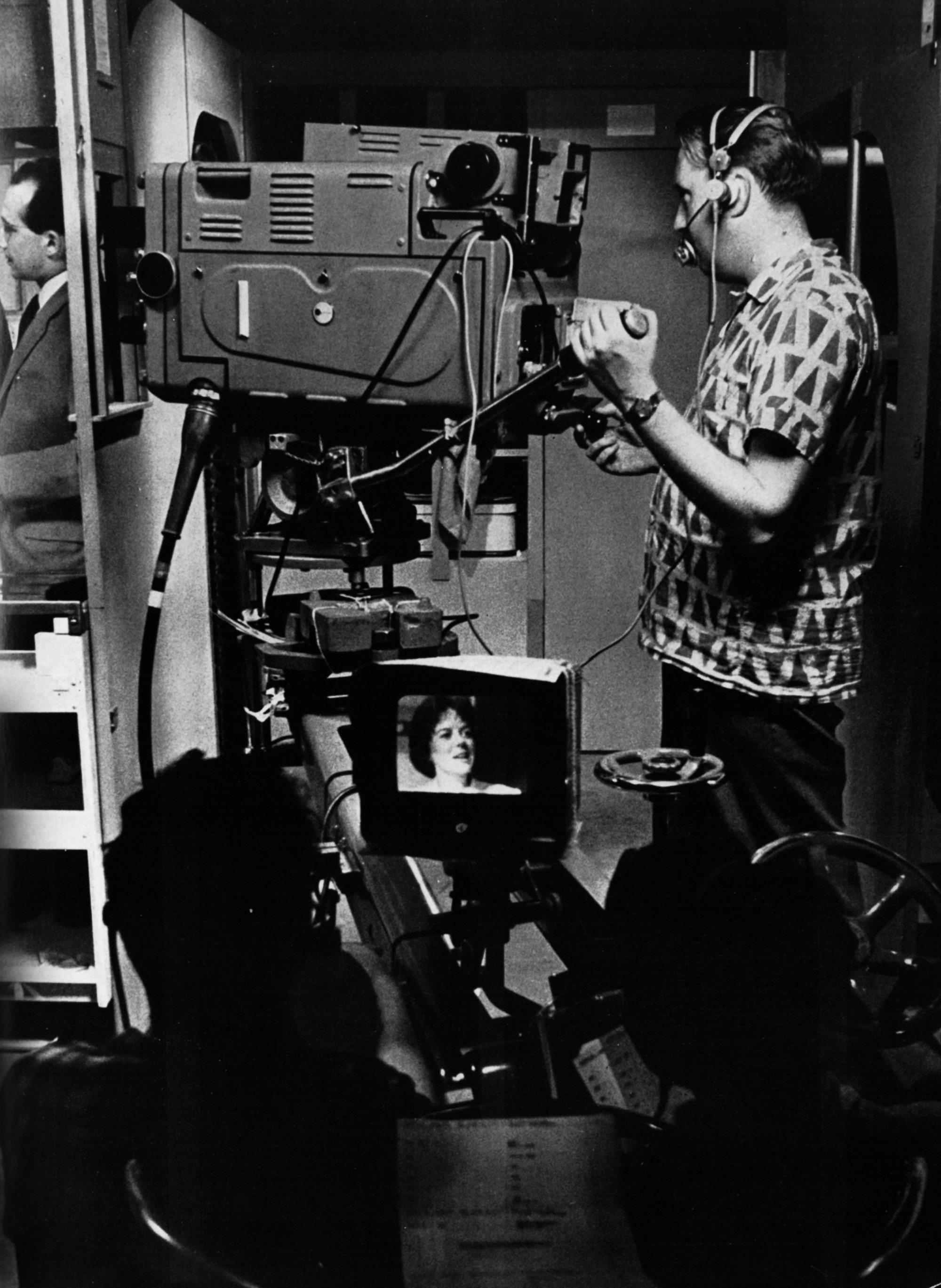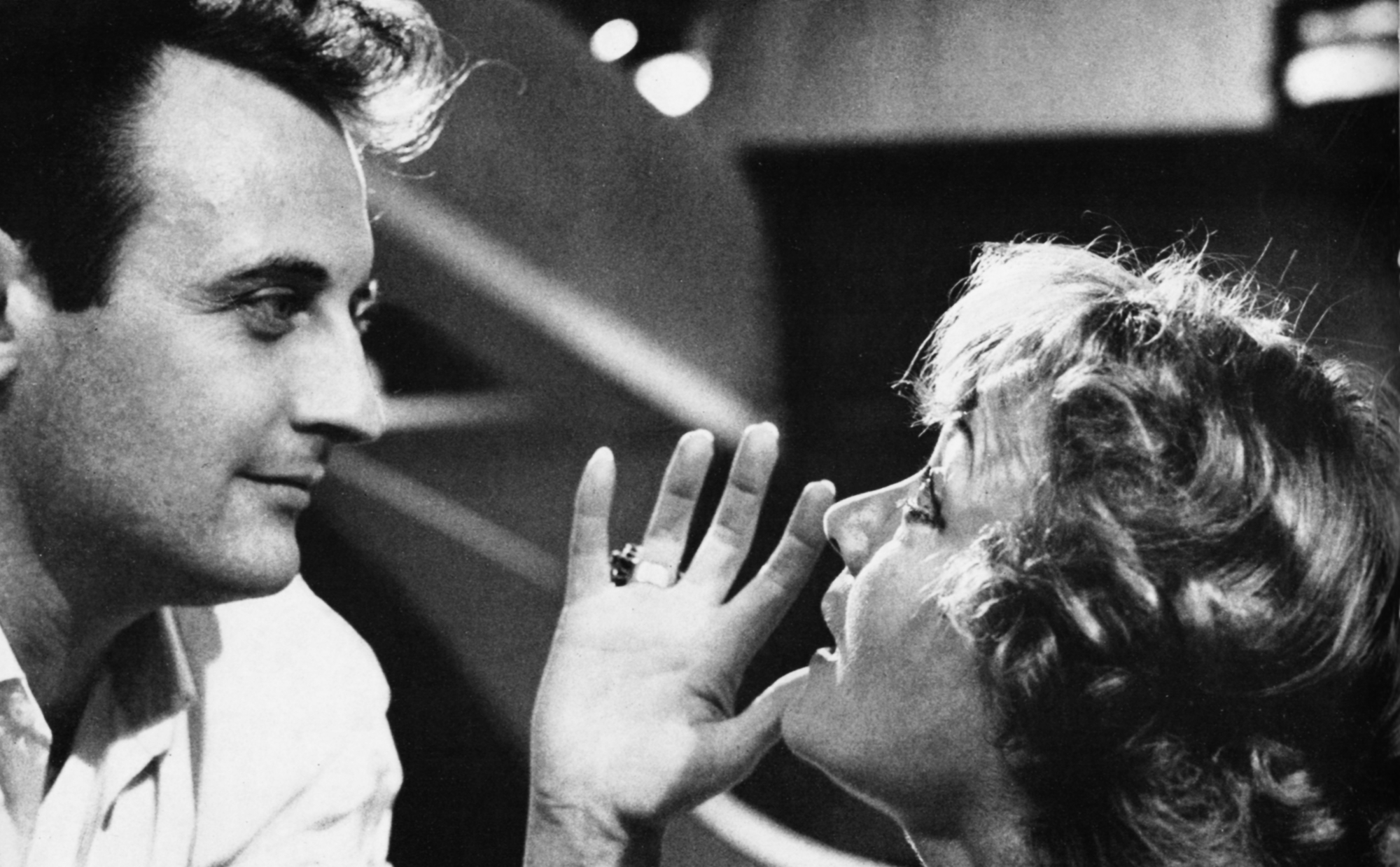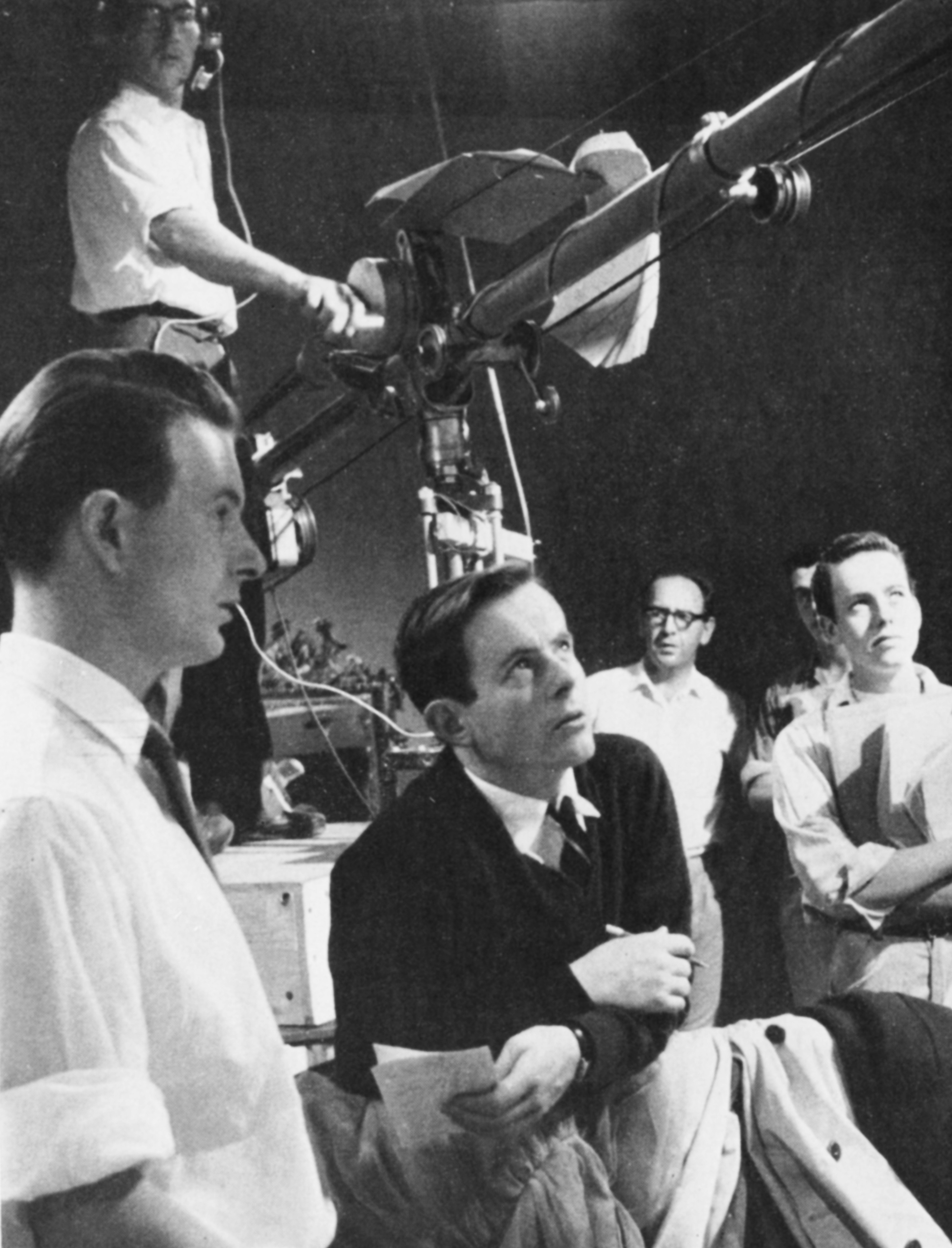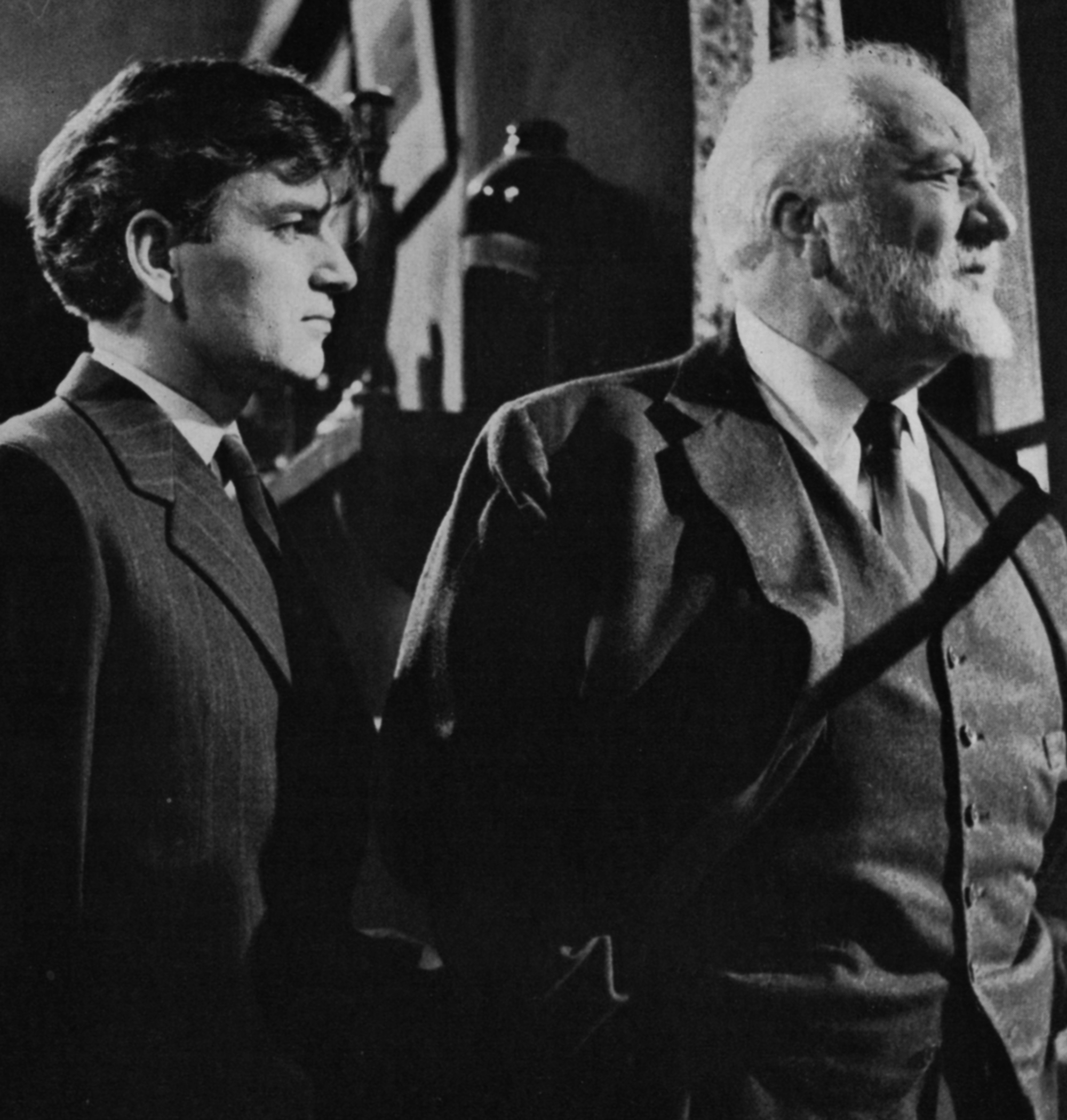The 1959-60 season of Armchair Theatre, the only ITV [drama anthology] programme presented every week by the same company, was a notable success with audiences. Thirty-two of the thirty-seven plays featured in TAM’s Top Ten ratings, one gained the highest viewing figure to date for an ITV play and another became the only play ever to achieve first place in the Top Ten
Producer Sydney Newman’s determined work among authors also resulted in a record proportion of new writing; eighteen of the plays were specially commissioned for the programme, among them the first original work for TV by Angus Wilson, Alun Owen and Harold Pinter. Of the remainder, all but seven were by British writers, and several were adaptations made for ABC
The season opened with The Scent of Fear, specially written by Ted Willis and directed by John Moxey, one of ABC’s ablest and most experienced directors, whose cigar is seen left in consultation with Sydney Newman




































